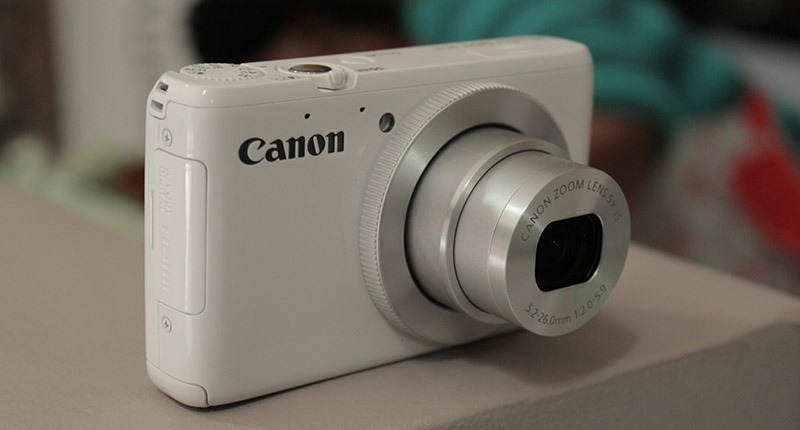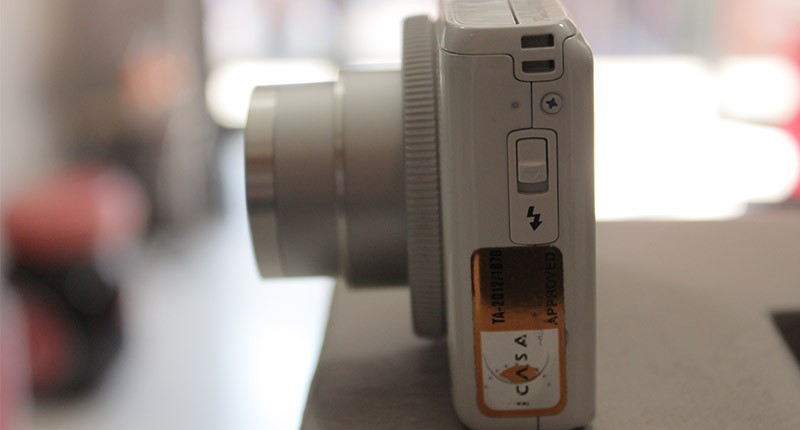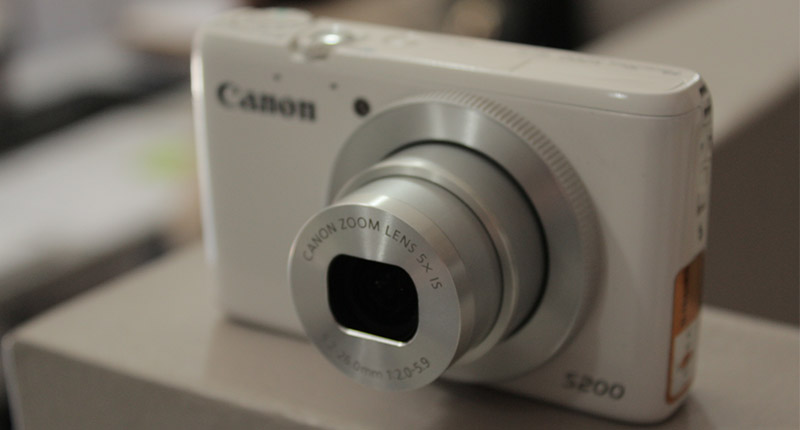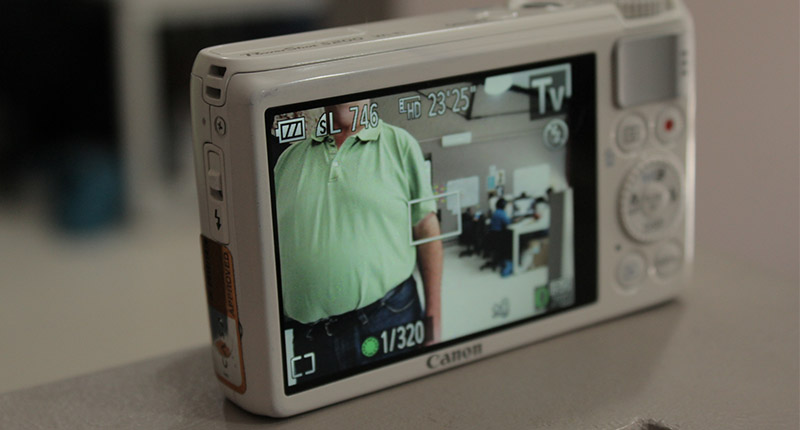Inbox icons, subject line sorcerers, CTA kings – the results are in. The 2025 You Mailed It Awards by Everlytic have crowned their champs, with Old Mutual Rewards and Machine_ taking…
Canon PowerShot S200 review: cool camera with worthless WiFi transfer


With smartphones and their apps taking over so many tasks previously managed by other methods and equipment, the question to ask is if we still need point-and-shoot cameras? Do they still have a space to fill that smartphones can’t? Everyone carries their cellphone with them and it has become the source of information via social media. This is the age of casual reporting, and it’s within the reach of anyone.
Since my first camera cellphone, I’ve always only considered the best on offer because of the work I did, and also because I usually have my cellphone with me when I don’t have a camera around. Making sure I capture quality images with my smartphone has thus become many main consideration when I choose a phone.
So, let’s consider the Canon PowerShot S200
First sight
I like cameras, and if it’s a Canon… need I say more? So when I received it, I could hardly wait to open the box and start shooting.
The rather large box, considering the size of the camera, did not hold anything more than the camera, a charger, power cord, battery, wrist strap and a manual with eight pages of simplistic information on how to get started.
I’m not particularly keen on compact cameras, I’m actually slightly snobbish about it, so I did not expect too much from it.
Picking it up
Canon is well known for solid, quality products, and the PowerShot S200 fits the bill. It is considered the entry-level camera in the PowerShot advanced performance compact camera range with the S120, G16 and the G1X Mark II completing the range.
The body has a good solid feel to it and is well built. The front boasts a retractable 24 to 120mm lens (yes, I prefer the 35mm equivalent) surrounded by a multi-function lens control ring. The bottom houses the battery and card slot and a tripod mount while the top panel sports the on/off switch, zoom control, program selector and a pop-up flash.

The rear panel is where it all happens by way of a 3.0” Purecolour II G LCD screen, video record button, function settings button and selector control ring, menu button and play button for crisp, clear viewing of your photographs on the screen. Oh yes, don’t forget the delete button to remove the flops. To the left, one will find the flash release button and to the right, under a neat cover, the HDMI and digital A/V slots.
So far, apart from the solid Canon construction, there is not much that sets it apart from the rest.
Capturing your memories
As with most compact cameras nowadays, the program dial boasts the usual manual, aperture priority, shutter priority, full program and auto modes. The auto mode detects up to 36 scenes and adjusts the settings optimally for the selected scene.
But then Canon added in a Live View program and a creative filter program, and this is where it outshines the competition with a wide range of useful and interesting effects that allows you to capture that perfect shot. Live View previews your photograph reflecting your adjustments to brightness and saturation settings so there is absolutely no reason not to get that exceptional shot. Retouch your picture while taking the photograph? The S200 does it. Okay, so maybe my cellphone is falling slightly behind now.

The S200 makes use of a 1/1.7 type high sensitivity image sensor with approximately 10.1M pixels and Canon’s DIGIC 5 image processor, the same processor used in the big brother CANON EOS 650D and EOS 700D DSLR cameras. The result are exceptional photographs that often exceed the quality of cameras with sensors boasting many more pixels than the S200.
Let’s put the electronics aside for a moment. The single most important aspect of any camera is the lens. The S200 has seven elements in six groups, giving us the optical focal range of 5.2 – 26.0mm, or in 35mm terms, 24-120mm. Add to this a further 4X digital zoom which still remains useful due to the intelligent image stabilisation system, and you end up with an approximate combined 20X zoom. It has an aperture range from a very large f/2.0 to f/5.9 which allows for decent shooting in low light conditions.
The autofocus is quick, accurate and silent. But expect Canon to add in the option of manual focus – I just love it and those that enjoy having control when shooting artistic shots will enjoy it as well. However, most users will seldom make use of the manual option as the auto focus options are just more than adequate.
The S200 allows for an ISO range from 80 through to 6400 and intuitive exposure compensation. I prefer to set the camera to ISO 200, but then I’m rather particular about grain or noise in my photographs and would use higher ISO settings only in low light conditions, for action photographs or for some artistic reason. Shutter speeds of 1 to 1/2000 sec is offered which is more than adequate for most. Video mode shoots 720p HD at 24fps, perhaps not the best around, but still presentable.
No strings attached
The S200 is a WiFi camera and has the capability to connect to and share your pics to smartphone or tablet (iOS or Android), back it up to the cloud, print wirelessly to Canon printers supporting PictBridge or share it to another camera. Geotagging your photographs can be done via the GPS on your smartphone.
Thumbs Down
The quick start manual is just that, a quick start manual written in a dozen and a half languages. The user manual, as with most equipment these days, needs to be downloaded from Canon and contains the finer details of the camera. Honestly, I like a manual that I can put on my bedside table and that I can read whenever I feel I need the info.

Using the WiFi was not as easy as it’s made out to be, and is pretty limited. I would have expected the camera to at least link to my home network with ease and provide projection to my connected TV, as my smartphone does. However, connection is managed from the camera itself and offers a limited selection of items to connect to. I eventually managed to get it linked to my phone and could upload my photographs to my phone and view it from there on my television. Once the connection is set up, it works well, but it’s easy to terminate the connection by accident, the whole connection effort starts will then repeat itself. It would have been far easier to remove the memory card and copy it via the slot on my laptop.
I always find it awkward to handle compact cameras, but using forefingers and thumbs seems to be the Canon way, although it’s not quite as stable as a DSLR sitting in the palm of my hand. I guess the image stabilisation is thus a required functionality to ensure clear, sharp photographs free from the results of camera shake.
Thumbs Up
This turned out to be quite an enjoyable experience. The multitude of program options and the versatility makes it a pleasure to play around with.
It produces fairly neat photographs with vivid colours and sharp focusing from macro mode right through to panoramic view and as a bonus, the menu system is well organised and easy to follow.
Verdict: This camera makes a great companion whether as a point-and-shoot, to capture moments with friends at a party using face recognition, or as an artistic tool to capture scenery off the beaten track.
Although I enjoy the camera on my smartphone, this is a step up with a great optical zoom lens (not relying only on a digital zoom like that of my smartphone) and far more control of the shooting environment not limited only to aperture, shutter speed and ISO, but also adding focusing and a whole host of additional functionality.
It’s also more than adequate for the odd movie clip. However, the attempt at WiFi fails to impress and I would not splash out the premium for the WiFi functionality offered by the S200.
Score: 7/10

